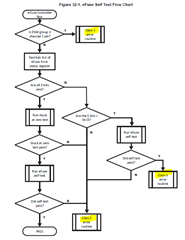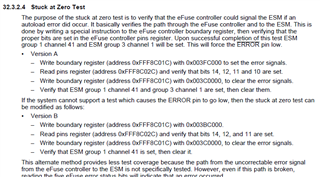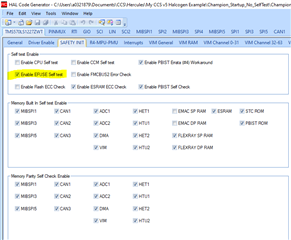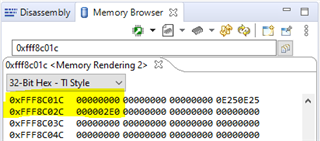Other Parts Discussed in Thread: HALCOGEN
Hello,
In the eFuse module, before starting the stuck-at-zero test, the following bits are already being shown as set(1) in the EFC Boundary Control Register:
- EFC Self Test Error
- EFC Single Bit Error
- EFC Instruction Error
- EFC Autoload Error
Because of this, the stuck-at-zero test is failing. What could be the reason for all these bits to be set at once? And is there any way to reset these bits?





